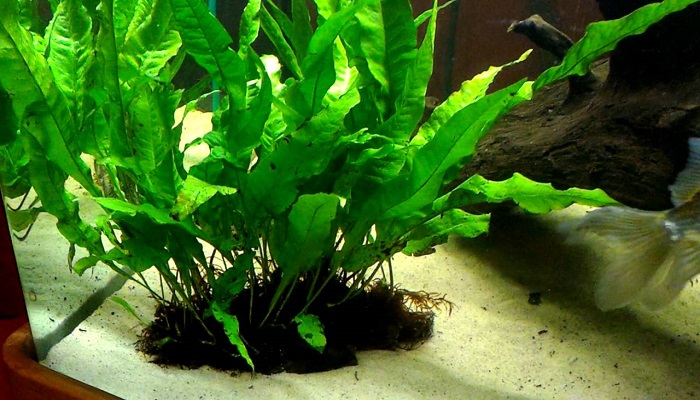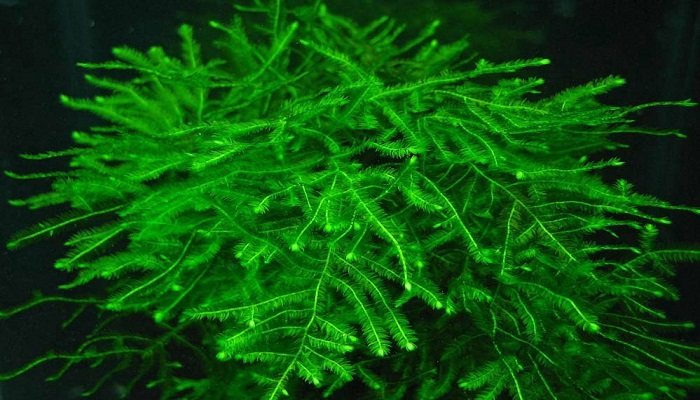
5 best freshwater aquarium plants tips
Between the continuous movement of the fish and the stillness that produces the decoration, the freshwater aquarium plants with their semi-static positions create a perfect harmony. But we must not forget that apart from its decorative aspect and that of providing hiding to fish and sheltering females to escape the continuous harassment of males that occurs in some species, the most important function of plants is to assimilate the Debris from the fish and in that process remove CO 2 from the water by supplying oxygen to it (at night the process is inverted, oxygen is absorbed and CO 2 is released). This last function is the cause by which, we must try to put natural plants instead of the plastic ones and for this the size of the grain of the sand should not be neither very thick nor very fine and we must make a layer of some 6-8 cm so that plants can take root. But I think it is important to note that unlike plants that live on the surface, in the vast majority of their sisters aquatic do not use their roots to feed, but that function is mainly performed by leaves and roots practically only Serves as a fixation on the floor.
Introducing 5 Best Freshwater Aquarium Plants
1. Common name :Floating fern
Floating fern is most popular freshwater aquarium plants for fish breeders.
Size: From 20 to 40 cm (width extension)
Temperature: 18 ° to 28 ° C.
Water: pH: 6.5 – 7.5; GH: prefer soft and acidic water, but withstands moderately hard water (up to 20ºd).
Substrate type: Unlike other Ceratopteris, this is used only as a floating plant. The fronds, somewhat spongy, prevent the arrival of light to the plants that lie below, a factor that must be taken into account and clarified frequently.
Form of propagation: Through young shoots that separate and grow independently.
Growth: Fast
Difficulty: Easy
2. Common name: Java fern
Size: Depending on the variety we have chosen ranges from 8 cm. Up to 50 cm
Temperature: 18 ° C to 30 ° C. In the case of high temperatures, it is necessary to take precaution with the necessary supply of nutrients, because in specific cases it deteriorates in high temperatures.
Water: Fairly tolerant, as long as there are no sudden changes. PH: 5.5 to 8.0 GH: 4ºd to 20ºd.
Lighting: Very low to very high. In the case of high illumination it is necessary that this plant be covered by others of greater foliage; Otherwise it deteriorates.
Substrate type: On logs, rocks, rough surfaces. It does not record.
Form of propagation: By spores. Cut and removed from a small part of the mother rhizome. It also propagates vegetatively through bulbs that form on the sides of the leaves.
Growth: Slow
Difficulty: Easy
3. Common name: “Java Moss”, “Singapore Moss”
Size: Leaves are approximately 1.3mm long and relatively oval. The bristles are between 1.5 and 2 cm in length
Temperature: 15 ° C to 28 ° C.
Water: pH: 5.0 – 8.5; GH: prefer soft and acidic water, but withstands moderately hard and even hard water.
Lighting: Fits any lighting condition, from very low to very high. However with excess light can be filled with algae, which are practically impossible to eliminate among their fine filaments.
Substrate type: It can grow anchored on substrate elements, or preferably adhered to rocks or trunks, where it is very decorative.
Form of propagation: By division or by spores.
Growth: Slow / fast, depending on availability of nutrients and lighting.
Difficulty: This freshwater aquarium plants difficulty is Low-Medium. Care must be taken that it is not filled with suspended debris, for which it is a magnet, as well as algae, which suffocates the plant. In cases of dirt accumulated between its filaments, it can be removed from the aquarium and rinsed under the tap of warm water, which is perfectly supported. If there are invertebrates in the aquarium (snails, Caridinas, Neocaridinas … they will take care of this work).
4. Common name: Anubias
The genus Anubias encompasses the most well-known varieties in the middle, it is also one of the most resistant species. The rhizome is hard and fleshy. In its natural environment the plant is palustre, it is commonly found on the banks of the rivers partially submerged and rooted between the stones and roots of the trees.
The varieties are:
– Anubias barteri var. “Nana”: One of the most common and small varieties, the leaves are oval 3 to 5 cm wide, light green in principle and bright dark green at maturity. The height rarely exceeds 15 cm. It is recommended to entangle or screw the rhizome so that the plant is compacted and forms leaf colonies.
It is also marketed under the name “Petit”.
– Anubia barteri var. Barteri : They can grow up to 45 cm high, because the petioles are slightly longer than the leaves. Leaves very similar to var. “Nana.” 5 to 8 cm wide, light green when tender, but slightly clearer than var. “Nana” as she matures. At this point the petiole becomes stiff, so special care must be taken when handling it or it may fracture.
– Anubias barteri var. “Caladiifolia” : One of the largest, the leaves can exceed 20 cm and the petiole 50 cm. Plant for large aquariums. It should be mentioned that the roots are quite strong and can even raise the plant.
– Anubias barteri var. “Caffeefolia” : One of the most expensive varieties, a little smaller than the Caladiifolia, the petioles are less straight and red, which contrasts with their dark green leaves.
-Anubias barteri var. Glabra: ——
-Anubias barteri var. “Angustifolia”: (“afzelii”). Plant whose leaves are lanceolate (spear-shaped), bright light green color. Under favorable conditions the leaves can exceed 15 cm long, the width one 1/3 of the length. The petioles exceed 30 cm in length. So it is recommended to have this plant in tall aquariums.
Temperature: 20 ° C – 30 ° C
Water: PH 5.0 – 9.0, Hardness: From soft to hard, although it develops best in water of medium hardness. Salt is not recommended.
Illumination: Weak, to avoid that the leaves cover of algae, we will have to take refuge in areas of low illumination or under the shadows of other plants.
Substrate Type: Prefer cracks in logs and stones. For this we will hold it with a cotton thread, and wait for it to take root to remove it.
If you want to freshwater aquarium plants in the substrate it is important not to bury the rhizome.
Difficulty: Easy.
Growth: Slowly, rarely blooms in the aquarium.
5. Common name: Cabomba or Green cabomba
Size: 30-80 cm high. Width of each stem: 5-8 cm in diameter.
Temperature: 18 ° to 26 ° C.
Water: pH: 6 – 7. Soft and acidic water.
Illumination: High to very high. It is a very demanding plant in this section and with low illumination tends to become brittle and to die in a short time. You also need CO2.
Type of substrate : The substrate must be clayey and rich in nutrients and requires periodic subscriber
Form of propagation : It propagates through cuttings, lateral shoots after cutting.
Difficulty: Difficult .
Conclusion
I hope now you easily choose what’s types freshwater aquarium plants you choose for your aquarium.





